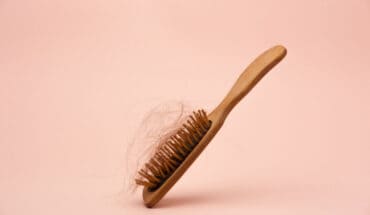If someone cuts themselves and it is bleeding, it is important to know how to help:
What should you do?
If someone is bleeding a lot, the priority is to stop the blood coming out! It is never a priority to immediately wash an injury. If the wound is serious enough for them to need to go to hospital, the nurses will clean it there. Minor wounds can be cleaned once you have controlled the bleeding and you are somewhere you can clean it properly.
You should wash your hands before you attend to the wound and ideally wear gloves.
Don’t poke or dig in the wound when you are cleaning it. Leave anything embedded in a deep wound and take the casualty to see a health professional so they can remove it.
Minor wounds will usually stop bleeding by themselves, but nevertheless, it’s important to put pressure on it with a clean cloth. You can remove grit and superficial debris from a minor wound by irrigating it with saline or clean water.
Once you have controlled the bleeding and cleaned the wound properly. You can apply an appropriate dressing, such as a plaster, depending on the wound size and location. Alternatively, you could a non-adhesive bandage secured with a tape. If you are using a plaster, ask the casualty to remove it after a few hours and to check the wound regularly for any sign of infection. Most wounds will heal better if left exposed to the air.
When to seek medical advice:
Seek medical advice if the wound is particularly deep, there is something embedded in it, it is on the face, it is very dirty, or if you are worried about it.
Wounds should be checked regularly for signs of infection. If the wound becomes hot, swollen, oozes pus or if you are concerned it is not healing properly. It is important that you also know the early signs of Sepsis.
If someone is Diabetic or elderly, their wounds may take longer to heal and should be assessed by a health professional.
What is shock?
If the patient loses a lot of blood, the patient could go into shock.
Shock is a lack of oxygen to the tissues of the body, usually caused by a fall in blood volume or blood pressure. It can occur when you do not have enough blood circulating around your body (or from other medical conditions that affect the amount of blood circulating to the vital organs).
Shock occurs as a result of the body’s circulatory system failing to work properly. Which means that the tissues of the body, including the heart and the brain, struggle to get sufficient oxygen.
The body’s response to this is to shut down the circulation to the skin – causing it to become pale, cold and clammy. The heart speeds up as it struggles to get sufficient blood supply and oxygen and to draw the blood away from the gut, causing the casualty to feel sick and thirsty.
They may also feel anxious, dizzy and a bit confused as their brain suffers from the lack of oxygenated blood too.
There are different types/causes of shock, but the first aid response is mostly the same.
Symptoms of shock
Initially:
- Rapid pulse
- Pale, cold and clammy
As shock develops:
- Grey-blue skin colour and blue tinge to the lips
- Weak and dizzy
- Nausea and vomiting
- Thirst
- Shallow, rapid breathing
- May become restless and possibly aggressive – a sense of ’impending doom’
- Yawning and gasping for air
Eventually they could lose consciousness and become unresponsive and they may stop breathing
How much blood can you afford to lose?
Children have far less blood than adults.
A person has approximately 0.5 litres of blood per 7kgs of body weight or one pint of blood per stone (although this does not increase if someone is overweight). An ‘average’ adult has roughly 10 pints / 6 litres of blood – if they lose about a 5th of their blood volume it can cause the body to shut down and go into shock.
The loss of a teacup full of blood could be fatal for a baby – however please note that head and facial injuries often lose a lot of blood and can look far more scary than they are – a teacup full of blood would make a major mess!
Treating Shock
Sit or lie them down.
Elevate the legs to use gravity to help improve the circulation to the vital organs. Do not do this if you suspect a spinal injury.
Manage external bleeding by putting pressure on the wound.
Cover them to keep them warm.
Shock is made worse when someone is cold, anxious and in pain – reassuring them and keeping them warm can make a real difference.
Call 999 and explain you think they are in shock.
Carefully loosen any tight clothing
Moisten their lips if they are complaining of thirst – do not give them a drink, as they may need an operation and it is safer to give someone a general anaesthetic when they have an empty stomach
Sit or lie the person down – to manage shock and prevent them from feeling dizzy and faint. If the bleeding is severe, elevate their legs
Examine the area to see if there is anything stuck in the wound – if there is, do not remove it
Pressure – apply direct pressure on the wound to stop the blood coming out
Elevate the bleeding area above the level of the heart to slow down the bleeding – elevation alone will not stop bleeding, so applying direct pressure to the wound with a clean cloth, is most important.
Dress it – Once bleeding is controlled, clean and dress the wound
- What parents need to know about Scarlet Fever & Strep A - 9th December 2024
- Heart Attacks and Cardiac Arrests – What’s the Difference? - 22nd October 2024
- High blood pressure and how to reduce it - 8th September 2024






